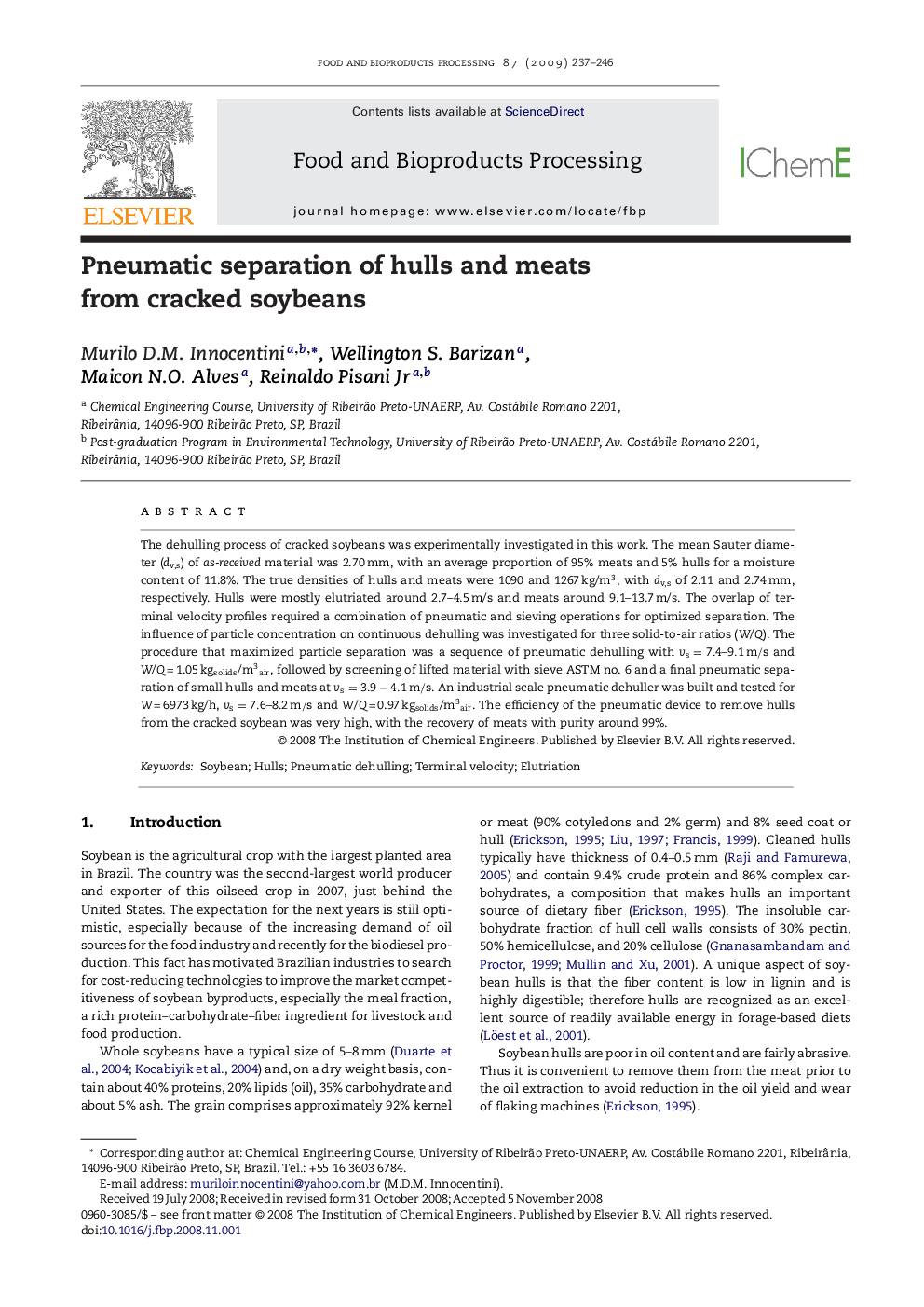| Article ID | Journal | Published Year | Pages | File Type |
|---|---|---|---|---|
| 19421 | Food and Bioproducts Processing | 2009 | 10 Pages |
The dehulling process of cracked soybeans was experimentally investigated in this work. The mean Sauter diameter (dv,s) of as-received material was 2.70 mm, with an average proportion of 95% meats and 5% hulls for a moisture content of 11.8%. The true densities of hulls and meats were 1090 and 1267 kg/m3, with dv,s of 2.11 and 2.74 mm, respectively. Hulls were mostly elutriated around 2.7–4.5 m/s and meats around 9.1–13.7 m/s. The overlap of terminal velocity profiles required a combination of pneumatic and sieving operations for optimized separation. The influence of particle concentration on continuous dehulling was investigated for three solid-to-air ratios (W/Q ). The procedure that maximized particle separation was a sequence of pneumatic dehulling with vs=7.4–9.1 m/svs=7.4–9.1 m/s and W/Q = 1.05 kgsolids/m3air, followed by screening of lifted material with sieve ASTM no. 6 and a final pneumatic separation of small hulls and meats at vs=3.9−4.1 m/svs=3.9−4.1 m/s. An industrial scale pneumatic dehuller was built and tested for W = 6973 kg/h, vs=7.6–8.2 m/svs=7.6–8.2 m/s and W/Q = 0.97 kgsolids/m3air. The efficiency of the pneumatic device to remove hulls from the cracked soybean was very high, with the recovery of meats with purity around 99%.
